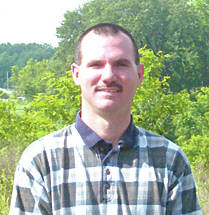Although it feels like winter won’t let go of its grip this year, there has still been enough warm days and warm rains along with some timely winds that most of area’s ponds and lakes are now ice free.
That means the migration of the ducks and other birds that wintered in the south is in full swing. What a perfect time to get out with a pair of binoculars and see some of the species of ducks that we only get to see when they are passing through. And unlike the fall, they tend to stay around a little longer in the spring for their slow migration back north compared to their hurried pace to get south in the fall. The best part of the spring migration is the birds are in full plumage for mating season so they are at their peak for being beautiful as they try to attract a mate.
• The Ohio Department of Natural Resources reminds Ohioans that small numbers of dead fish may be common in ponds and small lakes this spring. Winter die-offs of fish that result from long periods of heavy ice and snow cover on small waters are referred to as “winterkills.” Winterkills may occur in some Ohio waters this year as ice and snow from the past few months gives way to spring.
“Minor fish kills do not significantly impact fish populations or sport fishing opportunities in lakes and reservoirs,” said Kendra Wecker, chief of the ODNR Division of Wildlife. “Fish kills are fairly common in Ohio, particularly right after ice-out, from late April through mid-June, and during prolonged periods of hot summer weather.”
Winterkills are caused when persistent ice forms a surface barrier between water and air that prevents circulation of oxygen and blocks sunlight. If these conditions continue long enough, the oxygen fish need to survive may be depleted and result in some or all of them suffocating.
Winterkills are most common in shallow ponds and become obvious when dead fish are seen along the shore. Ohio’s northern counties are more susceptible to winterkill because of colder temperatures and more frequent snows. However, winterkills are possible in any part of the state during winters of persistent cold weather and snow cover.
Fish die-offs are possible in Ohio’s larger lakes as well, but for different reasons. Some fish, such as gizzard shad, are less tolerant of long, cold winters and are commonly seen along the shorelines of reservoirs and Lake Erie during moderate winters. However, in larger waters, species that commonly die off following winter are resilient and return in great numbers following a single spawning season.
Concerned citizens should not attempt to rescue stressed or dead fish. Handling stressed fish significantly reduces their chance of survival. Go to wildohio.gov to find more information about fish and preventing winterkills. Large numbers of dead fish should be reported by calling 800-WILDLIFE (945-3543).
• Special opportunities will be offered for young hunters seeking to pursue wild turkeys in the Killbuck Marsh Wildlife Area refuge this spring, according to the ODNR Division of Wildlife.
The Division of Wildlife will hold a drawing on Saturday, April 6 for a special controlled turkey hunting opportunity for youths within the refuge portion of the Killbuck Marsh Wildlife Area.
Hunting dates are scheduled for Saturdays and Sundays from April 13 through May 19. Hunters 17 years and under are required to attend the drawing and are also required to present a valid 2019-2020 Ohio hunting license.
The drawing will be held at the East Holmes Sportsmen’s Club, located 2.5 miles southeast of Millersburg on Township Road 310. Registration begins at 8 a.m. and the drawing will begin at 1 p.m. The drawing will coincide with a National Wild Turkey Federation JAKES event. Please dress appropriately for the weather.
For questions regarding the drawing, call the Killbuck Marsh Wildlife Area at (330) 567-3390 or call Wildlife District Three office in Akron at (330) 644-2293.
Until next time, Good Hunting and Good Fishing!




